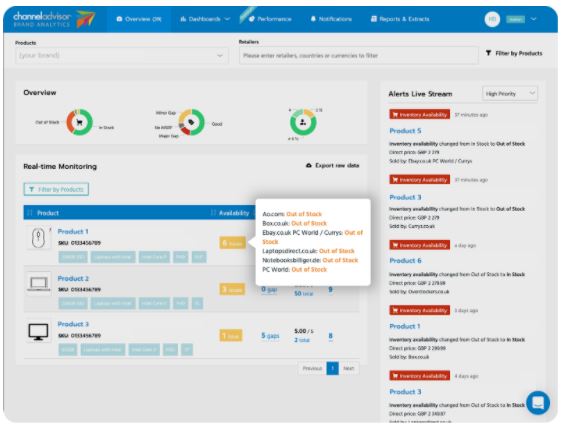It’s no secret that Amazon is an essential platform for anyone hoping to drive sales during the busiest shopping time of the year.
In 2020, the company hit a historic milestone with $100+ billion in fourth quarter sales, achieving over 50% of online market share — more than double that of its nearest competitor, according to Smart Insights.
There’s every indication to suggest the platform will either meet or beat those figures in 2021. But how can brands leverage this titanic channel for maximum benefit?
We’ve compiled a few ways you can prime your brand for success on Amazon this season.
DON’T: Get Caught With Low Inventory on Your Top-Selling Item
We all remember what happened last November: strained by pandemic-inspired consumer trends, Amazon was seeing a 4-to-6 week timetable for inbound less-than-load (LTL) shipping time, as well as a 25+ day receiving backlog at its fulfillment centers.
Beyond the obvious issue — no inventory means no sales — these hiccups can lead to more subtle problems in the future, including your discoverability, brand reputation, and more.
In anticipation of another likely sales surge this holiday season, take steps ASAP to ensure your distribution channels can weather demand.
For example, Amazon experts Hinge Global recommend scheduling your bulk shipments for 75% of your intended fourth quarter sales, and pivoting to LTL-to-small parcels for the rest of your inventory.
DO: Update Your Copy Every 3–6 Months
Your keywords play a crucial part of your seasonal campaign, and not just on the front-end — make sure you don’t neglect any back-end keywords that could make (or break) your discoverability.
As always, make sure to keep it relevant, and reflective of shifting holiday trends.
Remember: you’re as much as 24 times more likely to convert if your listing appears as the top search result.
With 74% of all online product searches starting on Amazon, it’s one of the most important pieces of online real estate your brand can own.
DON’T: Rely Solely on “Fulfillment by Amazon” (FBA)
While Amazon’s FBA program is the largest ecommerce fulfillment network in the United States, it’s not always perfect — last year, many brands learned the hard way that even a behemoth like FBA is susceptible to external market forces.
Relying solely on one fulfillment strategy — particularly if you cannot control it yourself — can leave brands vulnerable. Instead, mitigate your risk with diversified fulfillment channels.
For example: If you don’t already, make sure you have “Fulfillment by Merchant” listings set up on Amazon, and utilize the platforms “Born to Run” system if you’re using Vendor Central.
DO: Synchronize Your Storefront, AMS, and Promotion Strategies
Think holistically about your customer’s path to purchase, and make sure your messaging is consistent throughout all of your channels.
Providing a coherent brand message to customers isn’t only a great way to earn their trust: Hinge Global found that its clients performed 5.5 times better than the Amazon average when employing this approach.
DON’T: Forget About Your Margins
With the cost of advertising on Amazon steadily rising, according to Marketplace Pulse, rely on your margins-by-item to determine whether you should take a pay-per-click (PPC) or Amazon Marketing Services (AMS) approach to marketing each of your products.
As always, make sure you’re taking the approach that works best for your bottom line.
DO: Add Video
Are you taking full advantage of Amazon’s video capabilities? Customers love watching videos over reading copy, and providing a well-produced, informative ad will always help you stand out against competitors who don’t.
It will also improve your ROAS and discoverability on the platform.
DON’T: Shrug Off Listing Suspensions
If your listings are suspended, or you’ve been losing the “Buy Box” on your product pages, dive into your back-end auditing system to discover (and fix) the problem as soon as possible.
These issues can arise for a number of reasons; for example, Amazon finding a cheaper price elsewhere, or identifying discrepancies in your product description.
Brands need to practice proactive catalog management in order to avoid these “dings” and any related lost sales that may result.
DO: Add Product-Specific A+ Content
Ideally, you’d do this for all of your products, but it’s particularly important for your top-selling items.
Whether providing 360-degree views of your product, lifestyle images, downloadable manuals, etc., providing as much A+ content as possible increases consumer trust and almost always leads to increased sales.
In fact, one Salsify study found that going from five images to 10 images increased the average conversion rate by 48%.
By following these eight big Amazon strategy do’s and don’ts, you’ll set your brand up for success this holiday season.
Download Salsify’s four-part “Ultimate Holiday Ecommerce Toolkit” for more detailed information on preparing your brand for what is quickly shaping up to be the busiest online shopping season ever.







